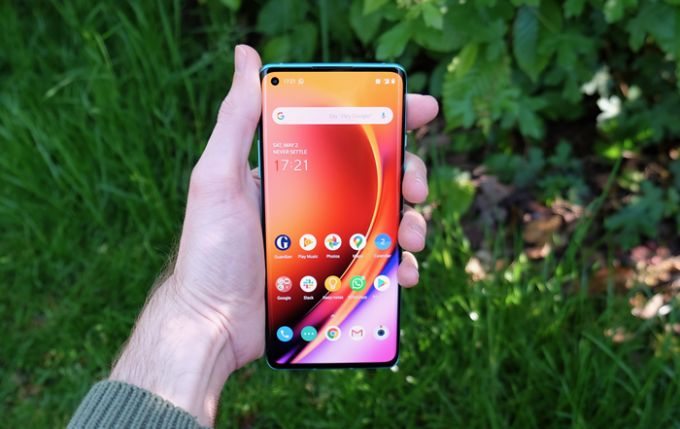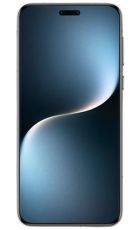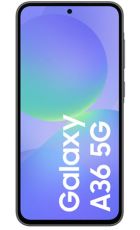While the OnePlus 8 Pro in one of the finest flagship phones on the market, it’s the OnePlus 8 that sticks truest to the original OnePlus ethos. Following the series lineage from the OnePlus One through the OnePlus 5 and the OnePlus 7T, it’s a near-flagship phone with a significantly lower price tag.
This year, however, OnePlus is charging more than it ever has for its mid-tier challenger. At £599, this represents a £50 price bump over the OnePlus 7T, which only launched in September.
At a time where Apple is offering the brand new iPhone SE for £180 less, does the OnePlus 8 continue to offer value for money?
Screen
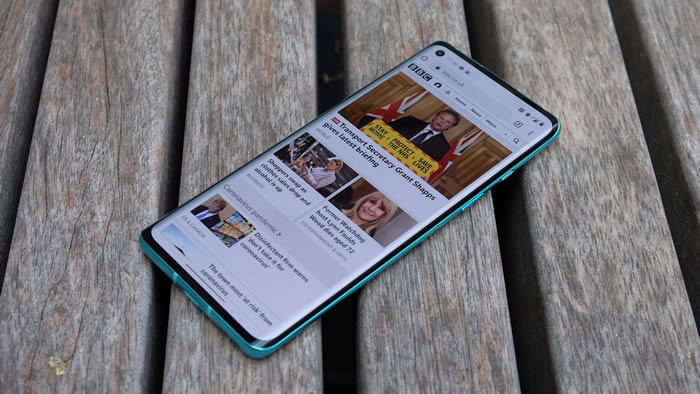
The OnePlus 8 might not have the QHD+ resolution and 120Hz refresh rate of the OnePlus 8 Pro, but it’s still a delight to use in every way that counts.
It’s a 6.55-inch 1080 x 2400 AMOLED that gets plenty bright, with beautifully balanced colours and deep blacks. And it’s still much smoother than most phones, with a 90Hz refresh rate that outstrips the likes of the iPhone 11 Pro by 50%.
The best thing we can say for the OnePlus 8 display is that we switched between it and the OnePlus 8 Pro repeatedly over a span of 10 days or so, and noticed no significant drop off in quality. We had to get them side by side to pick up on the differences.
Indeed, in one minor way we actually preferred the OnePlus 8’s display to the Pro’s. The OnePlus 8 screen’s edges curve off much less aggressively than the Pro’s, which looks less fancy but also has less of the distortion effect with full-screen content.
Design
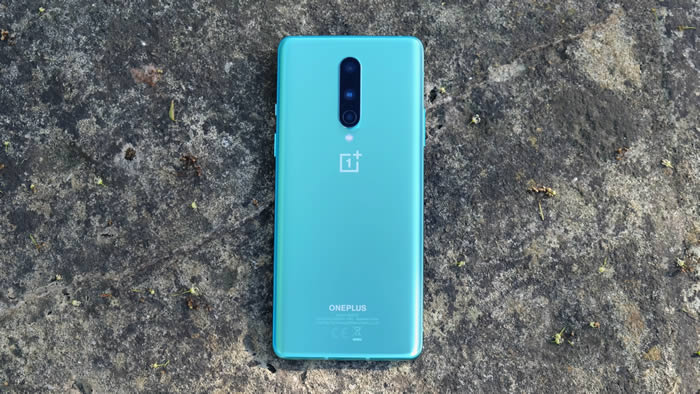
The OnePlus 8 shares a design language with the OnePlus 8 Pro, which is to say that it’s a handsome bit of kit.
It’s two slabs of glass sandwiching a metal frame, and both the display and the matte-finish back curve in at the edges. As we’ve just mentioned, the OnePlus 8’s display curves less aggressively than the Pro’s, which we find preferable.
Indeed, while the OnePlus 8 falls behind the Pro in most meaningful respects, it’s actually a nicer phone to handle. While this is far from a small phone, its more modest dimensions (160.2 x 72.9 x 8mm and 180g) mean that it’s easier to wield than its chunky brother.
Whether you prefer the OnePlus 8’s off-centre hole punch camera of the OnePlus 7T’s central dewdrop approach is a matter of preference. Combined with those curved edges, the OnePlus 8 certainly looks the fresher and more modern to our eyes.
Around back, the OnePlus 8’s central camera unit is much less pronounced than the Pro’s. Unfortunately this reflects a far inferior camera offering, but in design terms alone, it’s a positive.
Another shout out too for the OnePlus habit of putting a physical alert slider on the right hand edge, which switches between loud, silent and vibrate in an instant. We wish more Android manufacturers would include one.
The OnePlus 8 doesn’t get IP68 certification like its big brother. However, it has been sealed up in a similar fashion, so it should prove equally resistant to water and dust ingress.
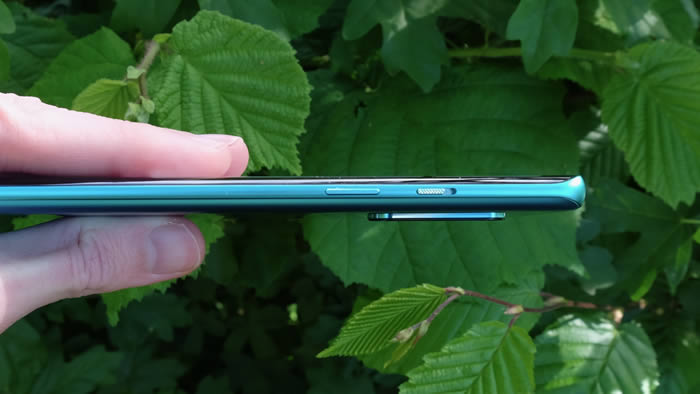
Power
OnePlus phones have traditionally made judicious cut backs to meet their lower price tags. But one area they never compromise on is performance.
The OnePlus 8 follows that tradition, with a cutting edge Snapdragon 865 CPU and a choice of 8GB or 12GB of RAM. The latter is an LPDDR4 variant, which is slower than the Pro’s LPDDR5, but we defy anyone to point out a practical instance where this is noticeable.
Of course, performance is about way more than a combination of CPU and RAM. OnePlus is famous for making its phones feel fast, and with the company’s finely optimised OxygenOS together with that 90Hz display, something as simple as scrolling through an information-dense web page or flicking between open apps seems faster here than on many more expensive phones.
Gaming performance is beyond reproach, too. If you fire up a game that’s been properly optimised for it, like Alto’s Odyssey or Grimvalor, then you’ll get a silky smooth frame rate that takes advantage of that 90Hz display.
Camera

OnePlus phones typically don’t have particularly great cameras. While that’s been addressed with the OnePlus 8 Pro, we can’t say the same for the OnePlus 8.
It’s not that the shots we took with the OnePlus 8 were flat out bad. Given lots of light it’s possible to take some decent shots with the phone’s 48-megapixel f/1.8 main sensor and 16-megapixel ultrawide. And it’s flexible too, with dedicated Nightscape and portrait modes, and a decent 16-megapixel selfie cam (though selfie portrait mode throws up some glitched edges).
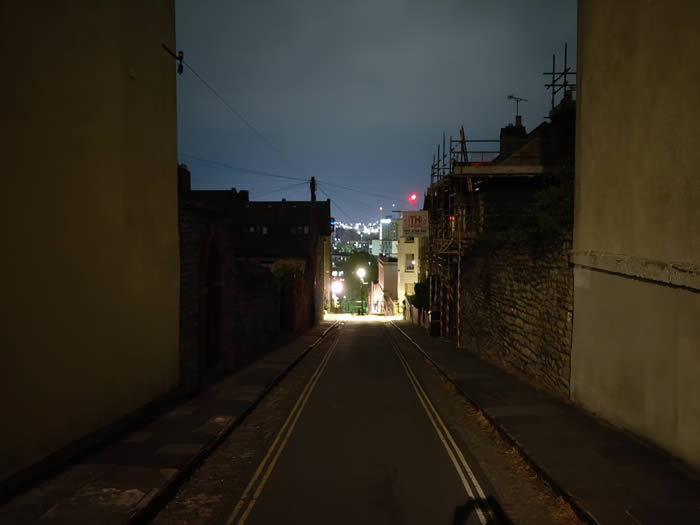
But we found that those shots would simply have less detail, less balanced colour, and less pop in all conditions (especially low light) than the same ones taken on the OnePlus 8 Pro. With a £300 price difference between the two, you might well expect that. But the Google Pixel 3a has made us expect a little more from our mid-range phone cameras.
And while the Pixel is markedly inferior in every other way, the OnePlus 7T is still uncomfortably close. Somewhat bizarrely, OnePlus has swapped out its predecessor’s 12-megapixel f/2.2 telephoto lens for a deeply underwhelming 2-megapixel macro, meaning 2X zoom shots are now cropped. There’s a strong argument to be made that the OnePlus 8’s camera package has actually gotten worse.
Features
The OnePlus 8 isn’t quite as feature-packed as its Pro brother, or other outright flagship phones. Perhaps most noticeably, you don’t get wireless charging, which is a bit of a shame.
You do get an in-display fingerprint sensor, however. This is reasonably fast and reliable, as such components go, but we did encounter the odd false read when our hand was damp or the display was particularly grubby. It’s also not up to par with classic dedicated button solutions, such as that of the iPhone SE.
OnePlus has provided an optional face unlock alternative, but we wouldn’t necessarily recommend it. It’s both fast and reliable, but it’s not as secure as the fingerprint method, as evidenced by the fact that you can’t authenticate payments with it.
You don’t get a headphones socket here either, but that’s an omission that’s starting to become the norm even with mid-range phones. On the flip slide, you do get stereo speakers, which isn’t always a given below flagship level.
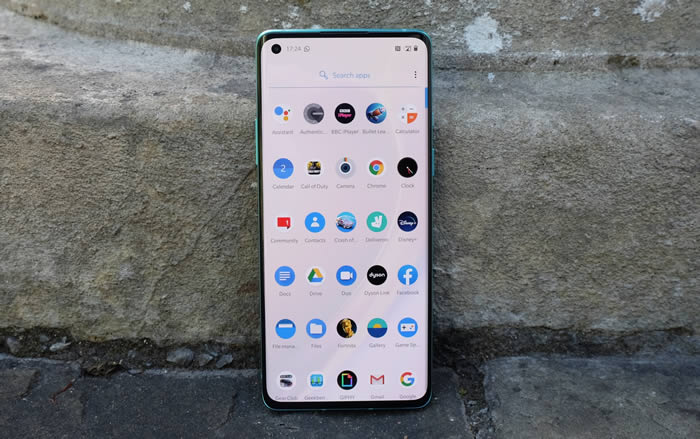
But the best feature of any OnePlus phone, arguably, is OxygenOS. It’s one of the cleanest, fastest, and most considered modifications of Android 10 around, with precious little in the way of bloatware or unwanted apps. It makes the OnePlus 8 a pleasure to use.
Battery life, memory and connectivity
As we’ve just mentioned, you don’t get wireless charging with the OnePlus 8. But its standard 30W wired-charging method via USB-C is blisteringly fast. Just 30 minutes of charging took us from 14% to 80%.
Not that you’ll find yourself in such a sticky situation too often. The OnePlus 8’s 4300 mAh battery is good for a day and a half plus of moderate usage, or a good six hours of screen-on time.
The memory options are simple but generous, with either 128GB or 256GB of storage. Which is handy, because there’s no microSD expansion facility.
This phone’s connectivity is truly excellent, with 5G support topping the list. This next generation network capability is something we expect to see in far pricier flagships, but not so much at this end of the market.
Most people won’t see the benefit of 5G connectivity just yet. But if your network and city does have it available, then the OnePlus 8 is one of the most affordable entry points to the world of super-fast low-latency mobile downloads.
Verdict
You can’t really argue with the base flagship-level experience the OnePlus 8 offers. Its fluid display and speedy performance are both unimpeachable, as are its classy build quality, lengthy battery life and blazing recharge rate. OnePlus’s singular approach to software remains a major strong selling point, too.
There’s been little material advancement from the OnePlus 7T, however, with a camera that’s arguably a little worse, and all at a slightly more expensive price point. But with the addition of 5G and a slinky new design, the OnePlus 8 remains one of the very best phones you can buy for £600.


